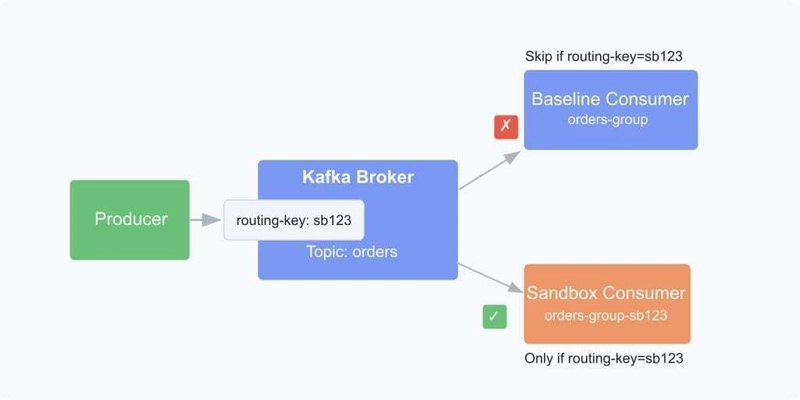Pros and Cons of Staff Augmentation vs Outsourcing
In today's competitive business scenario’s, companies are continually exploring innovative ways to improve efficiency, reduce costs, and access specialized talent. Two popular strategies often discussed are Staff Augmentation and Outsourcing. Both approaches offer unique advantages, but they also come with their own set of challenges. Understanding Staff Augmentation vs Outsourcing is crucial for businesses looking to make informed decisions about how to expand their workforce or outsource certain functions. In this article, we'll explore the pros and cons of both strategies to help you determine which is best suited for your business. Pros and Cons of Staff Augmentation Pros of Staff Augmentation: Flexibility Staff augmentation offers exceptional flexibility, allowing businesses to scale their workforce up or down based on immediate project needs. This makes it ideal for short-term projects or peak seasons when you require extra resources temporarily. Access to Specialized Talent One of the greatest benefits of staff augmentation is the ability to access highly specialized skills that may not be available in-house. Whether it's a particular technology or industry expertise, augmenting your team with external talent helps you quickly fill gaps in knowledge. Greater Control With staff augmentation, you maintain greater control over how the augmented staff is integrated into your existing teams and processes. This is a great advantage for businesses that prefer to keep direct oversight over the project, ensuring quality and alignment with internal goals. Cost-Effectiveness While hiring full-time employees involves considerable overhead, staff augmentation can be a more cost-effective option. It allows you to bring in experts without the long-term financial commitment of permanent hires. Cons of Staff Augmentation: Management Challenges One downside of staff augmentation is the added responsibility of managing external team members. Since the augmented staff is not directly part of your company, ensuring that they align with your culture and collaborate effectively can be a challenge. Short-Term Engagement Staff augmentation is generally used for short-term engagements, making it less suitable for long-term projects that require ongoing commitment. If you're looking for permanent staffing solutions, this might not be the right fit. Cultural Integration Issues Temporary staff might struggle to fit in with your company's culture. This can impact team dynamics and hinder smooth collaboration, particularly if the external team members are not familiar with your company's values and workflow. Pros and Cons of Outsourcing Pros of Outsourcing: Cost Efficiency Outsourcing can be a more affordable solution compared to hiring full-time employees, particularly for non-core functions. Businesses often outsource processes like IT support, customer service, and payroll to save on operational costs. Access to Global Talent Outsourcing opens the door to a global talent pool, giving businesses access to specialized professionals in areas where talent might be scarce locally. This helps in getting high-quality services at competitive rates. Focus on Core Activities Outsourcing allows you to focus on your core business operations while delegating time-consuming or non-core functions to third-party vendors. This can improve your overall efficiency and productivity. Scalability Outsourcing provides the scalability to ramp up or scale down resources as needed without the complexities of hiring and training new employees. This is especially valuable for businesses with fluctuating demand. Cons of Outsourcing: Less Control When you outsource, you give up some level of control over the processes and the quality of work. This can be a significant downside, especially when working with remote teams or third-party vendors. Communication Barriers Outsourcing often involves working with teams in different time zones or locations, which can lead to communication issues. Misunderstandings, delays, and lack of alignment on project goals can arise, affecting project outcomes. Security Concerns Outsourcing sensitive tasks, such as data management or customer service, can expose your business to security risks. Entrusting third parties with confidential information can lead to vulnerabilities if proper security measures are not in place. Hidden Costs While outsourcing can save money upfront, hidden costs can emerge. These might include costs related to managing vendor relationships, monitoring the quality of work, or resolving contractual issues. Conclusion Choosing between Staff Augmentation vs Outsourcing depends largely on your business goals, project needs, and available resources. Staff augmentation is ideal when you need specialized skills and greater control over your team, while outsourcing is beneficial for businesses looking

In today's competitive business scenario’s, companies are continually exploring innovative ways to improve efficiency, reduce costs, and access specialized talent. Two popular strategies often discussed are Staff Augmentation and Outsourcing.
Both approaches offer unique advantages, but they also come with their own set of challenges. Understanding Staff Augmentation vs Outsourcing is crucial for businesses looking to make informed decisions about how to expand their workforce or outsource certain functions.
In this article, we'll explore the pros and cons of both strategies to help you determine which is best suited for your business.
Pros and Cons of Staff Augmentation
Pros of Staff Augmentation:
Flexibility
Staff augmentation offers exceptional flexibility, allowing businesses to scale their workforce up or down based on immediate project needs. This makes it ideal for short-term projects or peak seasons when you require extra resources temporarily.
Access to Specialized Talent
One of the greatest benefits of staff augmentation is the ability to access highly specialized skills that may not be available in-house. Whether it's a particular technology or industry expertise, augmenting your team with external talent helps you quickly fill gaps in knowledge.
Greater Control
With staff augmentation, you maintain greater control over how the augmented staff is integrated into your existing teams and processes. This is a great advantage for businesses that prefer to keep direct oversight over the project, ensuring quality and alignment with internal goals.
Cost-Effectiveness
While hiring full-time employees involves considerable overhead, staff augmentation can be a more cost-effective option. It allows you to bring in experts without the long-term financial commitment of permanent hires.
Cons of Staff Augmentation:
Management Challenges
One downside of staff augmentation is the added responsibility of managing external team members. Since the augmented staff is not directly part of your company, ensuring that they align with your culture and collaborate effectively can be a challenge.
Short-Term Engagement
Staff augmentation is generally used for short-term engagements, making it less suitable for long-term projects that require ongoing commitment. If you're looking for permanent staffing solutions, this might not be the right fit.
Cultural Integration Issues
Temporary staff might struggle to fit in with your company's culture. This can impact team dynamics and hinder smooth collaboration, particularly if the external team members are not familiar with your company's values and workflow.
Pros and Cons of Outsourcing
Pros of Outsourcing:
Cost Efficiency
Outsourcing can be a more affordable solution compared to hiring full-time employees, particularly for non-core functions. Businesses often outsource processes like IT support, customer service, and payroll to save on operational costs.
Access to Global Talent
Outsourcing opens the door to a global talent pool, giving businesses access to specialized professionals in areas where talent might be scarce locally. This helps in getting high-quality services at competitive rates.
Focus on Core Activities
Outsourcing allows you to focus on your core business operations while delegating time-consuming or non-core functions to third-party vendors. This can improve your overall efficiency and productivity.
Scalability
Outsourcing provides the scalability to ramp up or scale down resources as needed without the complexities of hiring and training new employees. This is especially valuable for businesses with fluctuating demand.
Cons of Outsourcing:
Less Control
When you outsource, you give up some level of control over the processes and the quality of work. This can be a significant downside, especially when working with remote teams or third-party vendors.
Communication Barriers
Outsourcing often involves working with teams in different time zones or locations, which can lead to communication issues. Misunderstandings, delays, and lack of alignment on project goals can arise, affecting project outcomes.
Security Concerns
Outsourcing sensitive tasks, such as data management or customer service, can expose your business to security risks. Entrusting third parties with confidential information can lead to vulnerabilities if proper security measures are not in place.
Hidden Costs
While outsourcing can save money upfront, hidden costs can emerge. These might include costs related to managing vendor relationships, monitoring the quality of work, or resolving contractual issues.
Conclusion
Choosing between Staff Augmentation vs Outsourcing depends largely on your business goals, project needs, and available resources. Staff augmentation is ideal when you need specialized skills and greater control over your team, while outsourcing is beneficial for businesses looking to reduce costs and focus on core functions.
Each approach offers distinct advantages and challenges, and understanding these factors can help you make the right IT Staffing Solution for your business. For a more detailed comparison and further insights, we encourage you to read our full guide on Staff Augmentation vs Outsourcing.
By carefully evaluating your business requirements, you'll be able to choose the right strategy to optimize efficiency, reduce costs, and drive long-term success.










































































































































































![[The AI Show Episode 142]: ChatGPT’s New Image Generator, Studio Ghibli Craze and Backlash, Gemini 2.5, OpenAI Academy, 4o Updates, Vibe Marketing & xAI Acquires X](https://www.marketingaiinstitute.com/hubfs/ep%20142%20cover.png)






























































































































![[DEALS] The Premium Learn to Code Certification Bundle (97% off) & Other Deals Up To 98% Off – Offers End Soon!](https://www.javacodegeeks.com/wp-content/uploads/2012/12/jcg-logo.jpg)
![From drop-out to software architect with Jason Lengstorf [Podcast #167]](https://cdn.hashnode.com/res/hashnode/image/upload/v1743796461357/f3d19cd7-e6f5-4d7c-8bfc-eb974bc8da68.png?#)









































































































.png?#)


(1).jpg?width=1920&height=1920&fit=bounds&quality=80&format=jpg&auto=webp#)




-Mario-Kart-World-Hands-On-Preview-Is-It-Good-00-08-36.jpg?width=1920&height=1920&fit=bounds&quality=80&format=jpg&auto=webp#)
























_NicoElNino_Alamy.png?#)
_Igor_Mojzes_Alamy.jpg?#)

.webp?#)
.webp?#)





























































































![Gemini can be the biggest AI platform so long as Google integrates it in more areas [Video]](https://i0.wp.com/9to5google.com/wp-content/uploads/sites/4/2025/03/Gemini-Live-with-Im-in-my-Gemini-era-sticker.jpg?resize=1200%2C628&quality=82&strip=all&ssl=1)













![Apple Considers Delaying Smart Home Hub Until 2026 [Gurman]](https://www.iclarified.com/images/news/96946/96946/96946-640.jpg)
![iPhone 17 Pro Won't Feature Two-Toned Back [Gurman]](https://www.iclarified.com/images/news/96944/96944/96944-640.jpg)
![Tariffs Threaten Apple's $999 iPhone Price Point in the U.S. [Gurman]](https://www.iclarified.com/images/news/96943/96943/96943-640.jpg)





























































































































